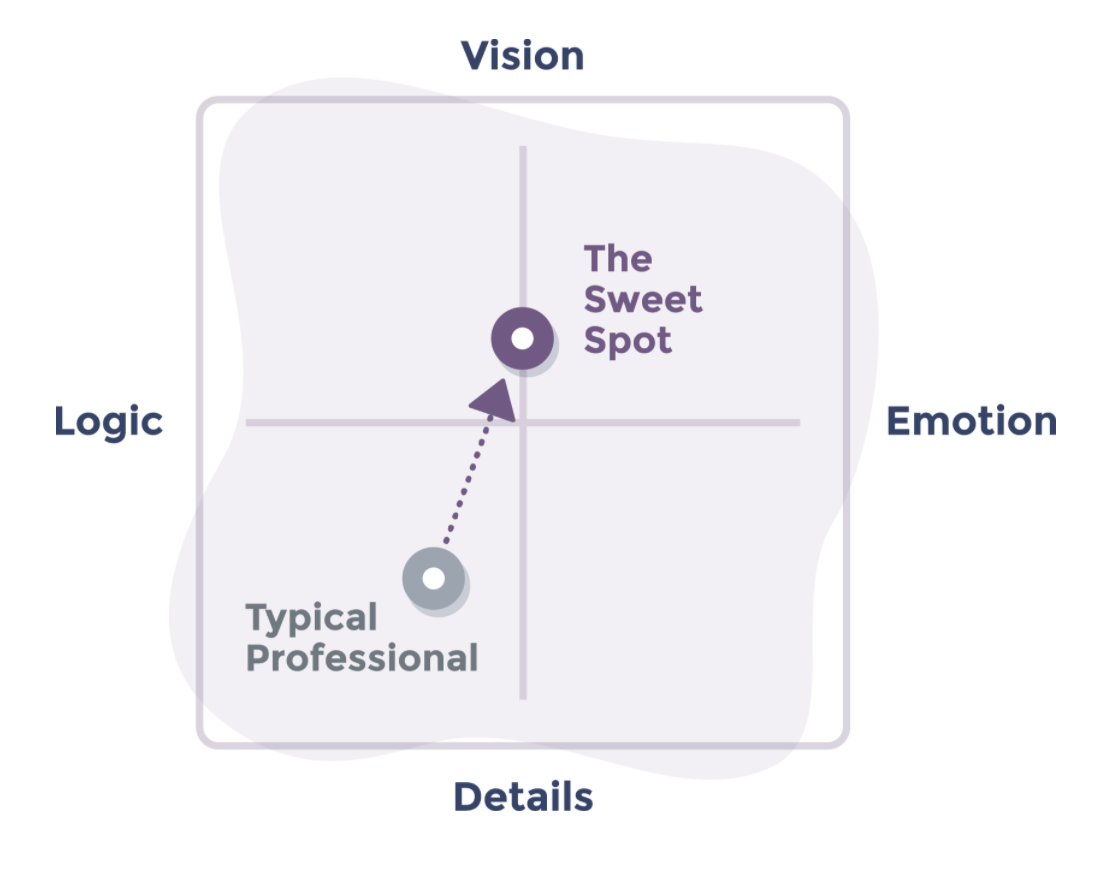So you’re preparing for your first leadership role (executive, VP, director, manager) and want to nail the interview. Congrats on having the confidence to apply!
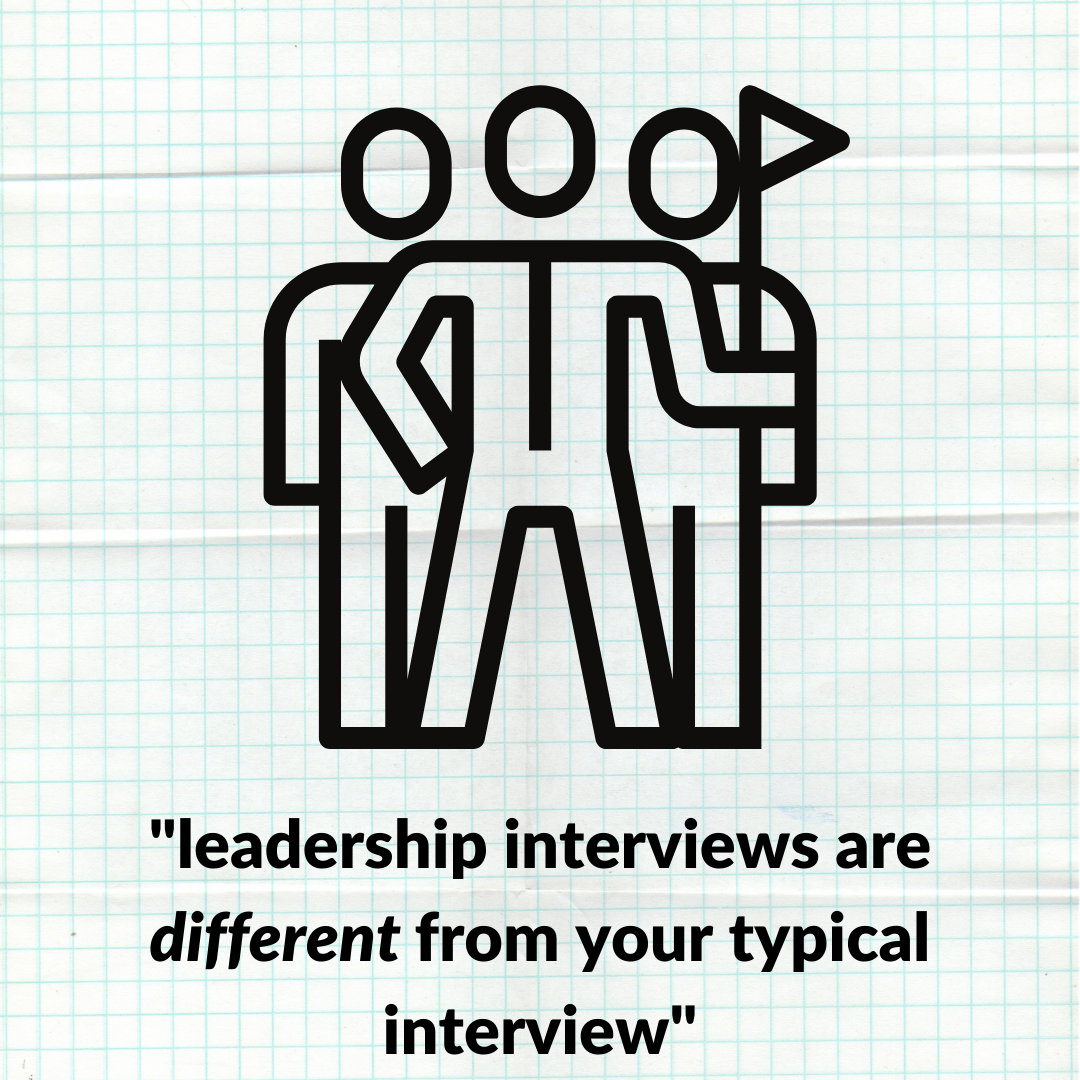
To get started with the right mindset, realize that leadership interviews are different from your typical interview. The interview questions you’ll be asked are different and it’s necessary to practice answering them. But here, we’ll focus not so much on what you say but HOW you say it – the strategic approach you take when speaking. We’ve found this to give the best short-term and long-term results rather than trying to memorize the answers to specific questions.
How To Use This Article
- Read the section below about the Leadership Communication Matrix
- Identify where you naturally fit on the Matrix
- Learn where the leadership communication “sweet spot” is and identify your gaps
- Practice in the areas that come less naturally to you
The Leadership Communication Matrix
Whether you’ve decided you’re going to go for a specific leadership role or you’ve received feedback that you’re not communicating at a “leadership level,” you need to understand the Leadership Communication Matrix. It’s a simple model we’ve developed after working with thousands of professionals and noticing what separates those who communicate like leaders.
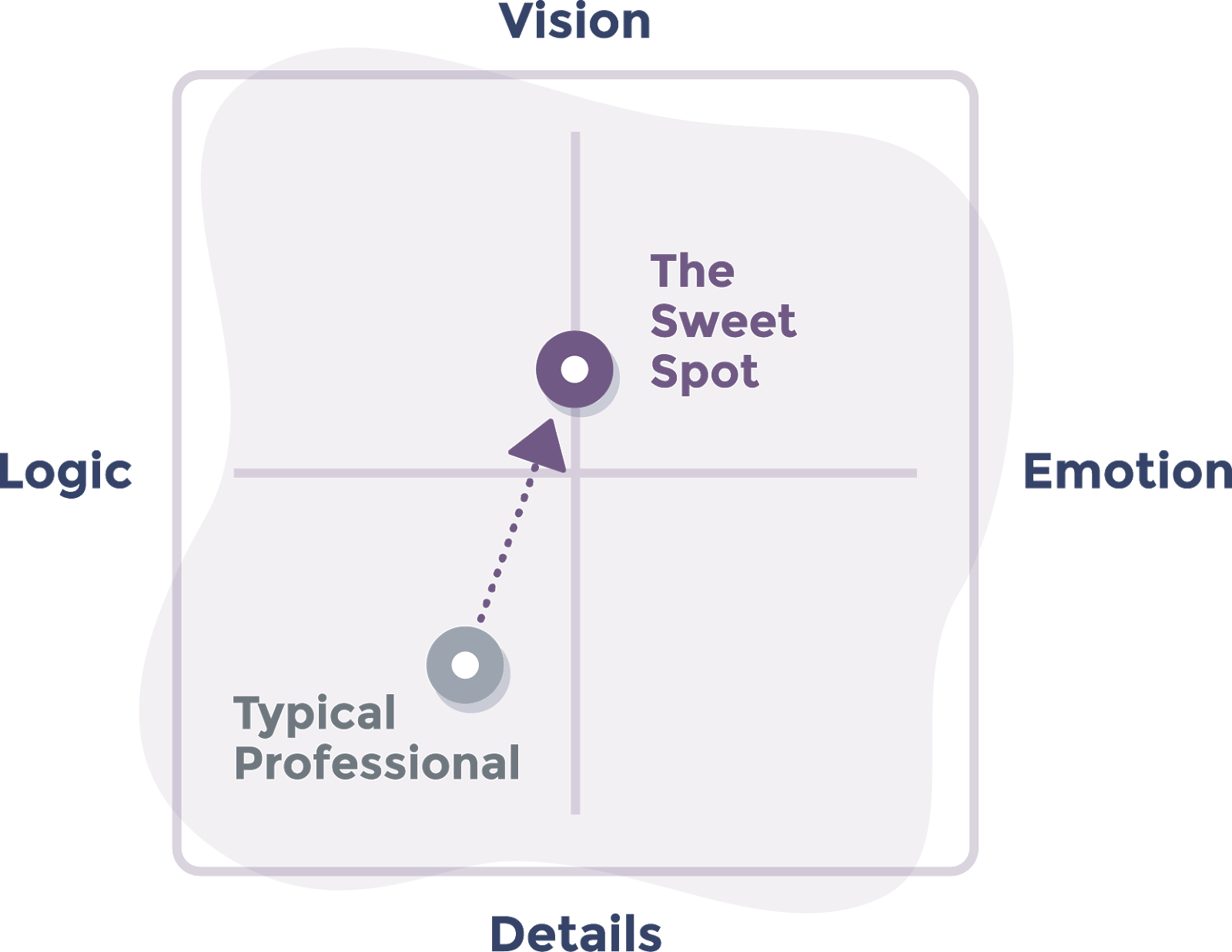
On the Y-Axis, there’s a spectrum of Vision and Details. Speaking predominantly at a Vision level is something that CEOs of large companies (and founders) are expected to do. “We’re going to become an interplanetary species” or “We’re going to eliminate world hunger” is large, visionary communication.
On the other end of the range is Details. This is diving deep into the exact specifics of how something is built or running. “We’re designing a new type of rocket that has a speed of 6000 km/h. We’ve been having daily meetings with the engineers where we’ve been…”
For the X-Axis, there’s a range between Logic and Emotion. Being on the Logic side means you lean on data, research, statistics, and rational reasoning in your arguments. On the Emotion side, you’re telling specific stories, using metaphors, analogies, quotes, or scenarios. An important distinction here is that Emotion doesn’t mean you’re “emotional” as we typically think of it. It just means you’re able to give a visceral feeling to others so that you can be more memorable (and even be entertaining). Tip: Being memorable in an interview is critical!
The “Sweet Spot” For Leadership
Now, there isn’t a better or worse place to be on this matrix. It all depends on your audience and context. However, for a leadership role, there is a Sweet Spot that you want to master and stay in most often.
Take the Y-axis first. As a leader, you can’t stay only in the Details. If you do, you’ll be told that you’re “jumping into the weeds” without giving proper context. That proper context means going higher up the axis and speaking to the strategic reasons why you’re doing a certain project or initiative. On the flip side, only speaking at a Vision level may only work if you’re a CEO at a large company – speaking at too high a level all the time may not be appropriate for your role.
So ideally, you want to be a bit more towards Vision, but still have the ability to move up and down the axis when appropriate.
The Sweet Spot is what’s considered “Strategic Speaking.”
Looking at the X-Axis, you can see that the Sweet Spot is one that’s balanced between Logic and Emotion. If you’re only speaking on the Logic side, you risk sounding dry and even boring. If staying too much on Emotion is the issue, you may sound too “fluffy” and not credible. When answering leadership interview questions, you need to appeal to different types of people with different types of thinking styles. Balance is key for this.
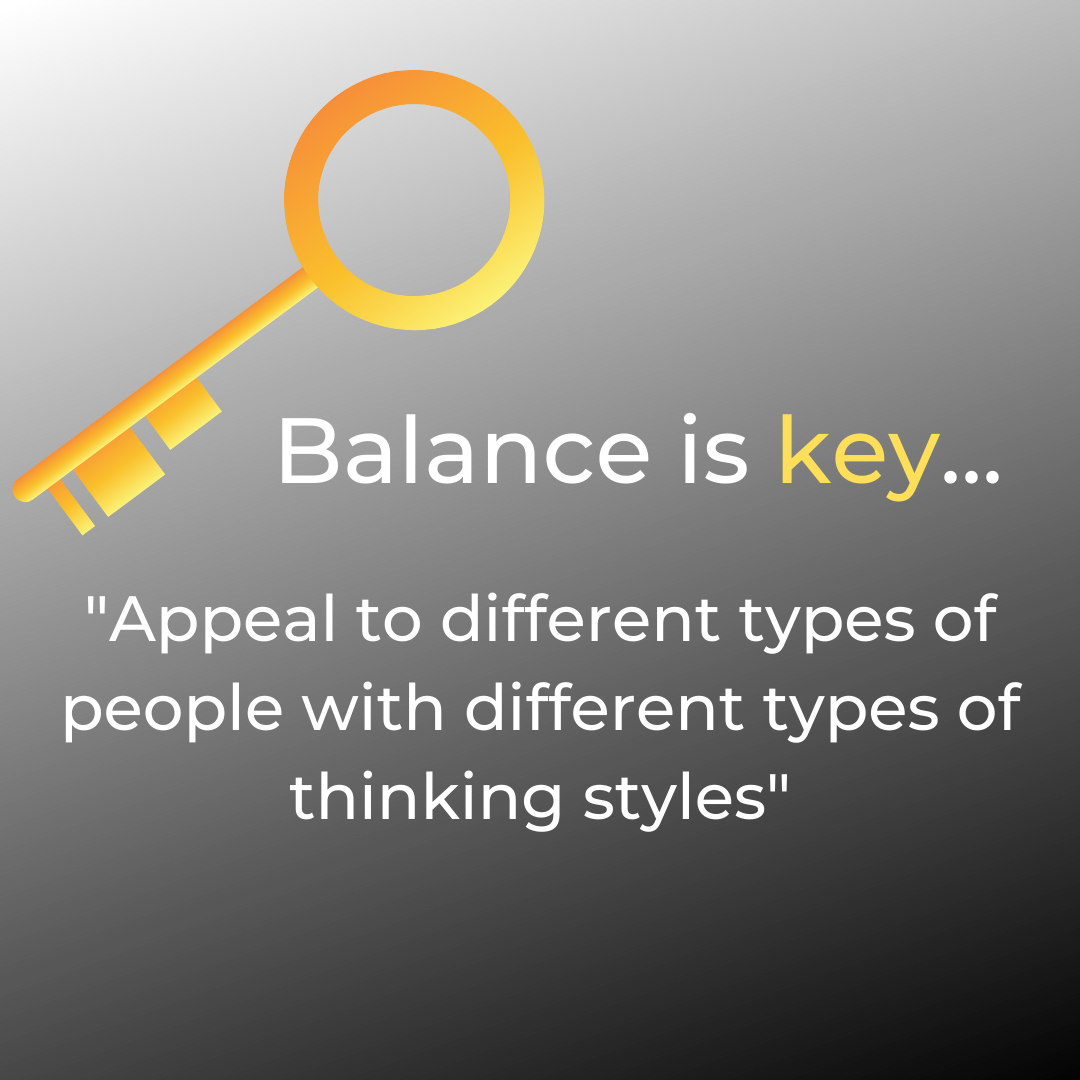
In the end, the Sweet Spot ends up being balanced on Logic/Emotion and a bit biased towards Vision. This is where you want to stay most of the time.
Where You Fit On The Leadership Communication Matrix
To move to the Sweet Spot, you need to first know where you tend to naturally sit. So ask yourself, where do I lie on Logic vs. Emotion? Do I tend to reason things out to explain my points? Do I tend to rely on data? Do I bring in stories to illustrate a point? Or use powerful analogies or metaphors to distill complex topics?
And where do I lie on Vision vs. Details? Do I get feedback that I get “lost in the weeds?” Or do I have an easy time talking about the strategic vision of a project?
We’ve seen that many of our clients end up where we’ve marked the “Typical Professional” – more biased towards the Logic side and heavy on the Details. We spend a lot of time moving them toward Emotion and even more time moving them up towards Vision.
How to Adjust: Emotional vs. Logical
Once you’ve identified where you fit on the Communication Matrix, then the next step is to either bring in more emotion or logic to what you say, depending on where you fall on the Matrix.
For example, if your domain is more on the technical side, explaining your work exclusively from that perspective might not always resonate with everyone. Folks from other departments might not have that deep technical understanding.
So how can you help people from cross-functional teams understand something technical they aren’t familiar with? Add stories, analogies, metaphors, demonstrations, or other ways that convey what you’re talking about at a visceral level.
For example, if you were explaining the benefits of a new feature of an app, instead of just explaining how it was more efficient on the backend from a technical perspective, you could complement that with an analogy – “the new feature is like adding an extra sail to the boat.”
What about if you fall more on the Emotion side of the Leadership Communication Matrix?
If you’re more on the Emotion side then you’ll need to bring in more logic to what you’re saying. This could mean hard data, references, graphs, numbers, or technical proof to back up what you’re saying. More logic can also be concisely explaining WHY you think X or are saying Y.
For example, let’s say you’re making an argument for the popularity of a certain car on the road. If you fall more on the Emotion side, you may naturally back this up by sharing your personal experience and how each day as you drive to work, you see more of this car on the road than any other car. While that information helps paint a picture, it would be even more effective to balance it with an element of logic. If you see that car often you could make the argument that its price is lower than most which could be one reason why it’s popular. You could also pull up surveys or studies backing up your argument about the car’s popularity.
Depending on where you fall on the matrix, be mindful of pulling in the opposite element so you’re more balanced.
How to Adjust: Details vs. Vision
Most professionals we work with are action-oriented and get things done. Because of that, they are used to communicating at the level of action, which tends to be too detailed.
To be perceived as a leader, you need to raise your level of communication to the strategic level. To see what this means, imagine this analogy:
If you are a soldier taking fire in a building and someone asks you to report your situation. What would you say?
You will probably say something like this ” I am on the southeast side of building A and taking in heavy fire.”
Notice how detailed that is.
Now imagine you are the squad commander of that soldier, and you are asked to report on the situation. What would you say?
Most likely, you would say something like this ” I am in Building A with six soldiers, and we are working on getting to building B across the street. We plan to suppress enemy fire and cross the street.”
Notice that this communication is at a higher level than the soldier, but still not high enough for strategy. We call this language tactical.
So instead, imagine you’re the general looking down on the situation from a satellite.
To report on the situation, you might say the following, “We have foot soldiers going through the town building by building. We have airplanes coming in from the south for cover. We have a ship in the harbor with more reinforcement. And as we speak, tanks are rolling in from the north.”
Notice how high-level and broad this communication is? This is the level of strategy.
So next time you are asked a question about your team during an interview – instead of starting with a challenge you are having, or one project you are working on, start from a broader perspective. For example, “my team is working on five products ranging from A to B. Our primary objective is X. All our projects are moving forward on time and on budget. An area we are challenged with is Y.”
Notice how instead of starting with the detail (the challenge) you can give the Satellite view first and then zoom in on the details if you need to. That way, your communication shows up as strategic.
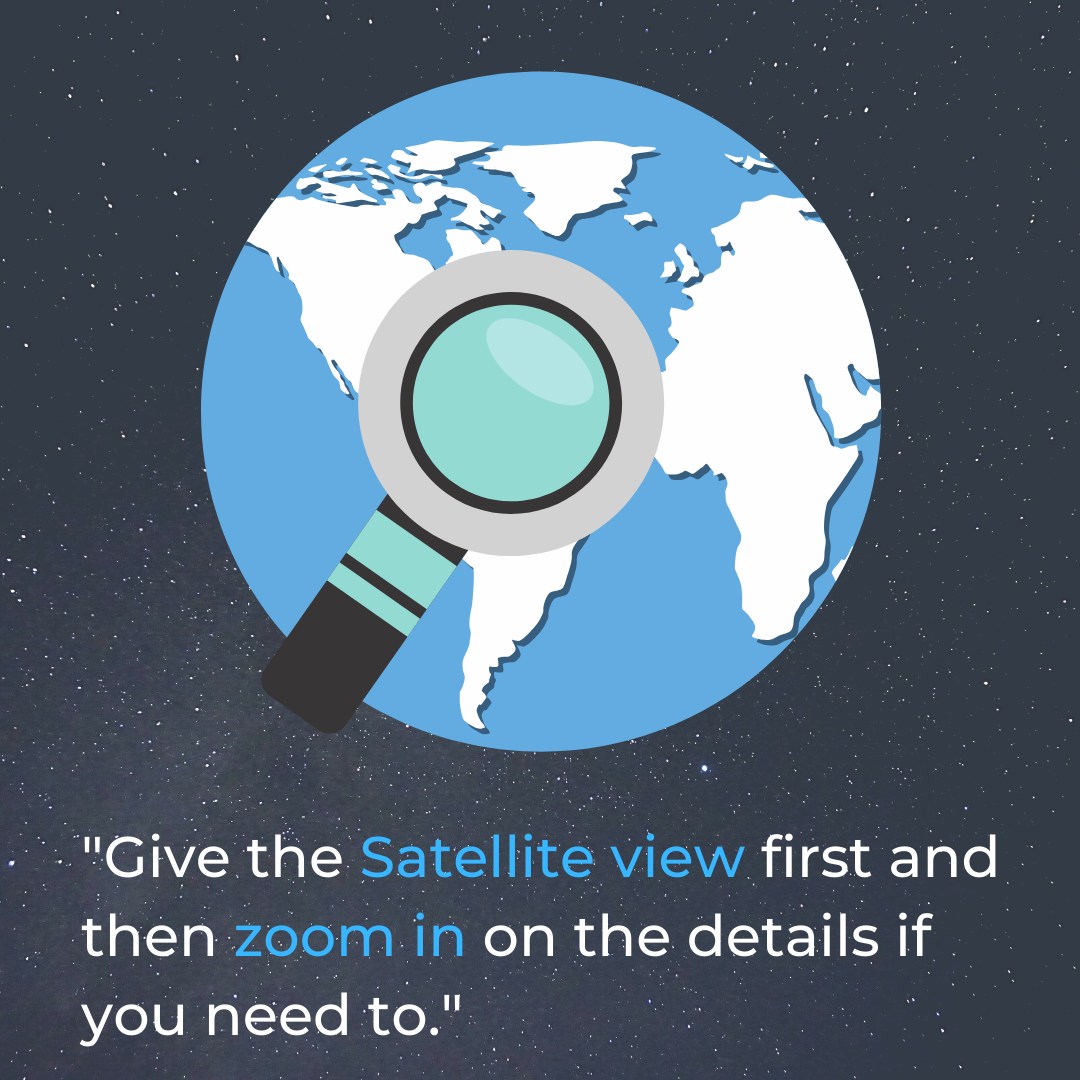
Conclusion
When approaching a leadership interview question you want to show two qualities: 1) you are a strategic communicator and 2) your communication is balanced between logic and emotion.
The strategic communicator part tells your interviewer that you are familiar with the terrain and landscape of work. The balance between logic and emotion tells your interviewer that you can express your ideas systematically and logically yet you are aware that you will be communicating to human beings driven by emotion.
And of course, if you have a big interview coming up and you’d like some 1:1 coaching, reach out for a consultation! We’d love to help you get the leadership role you deserve.
